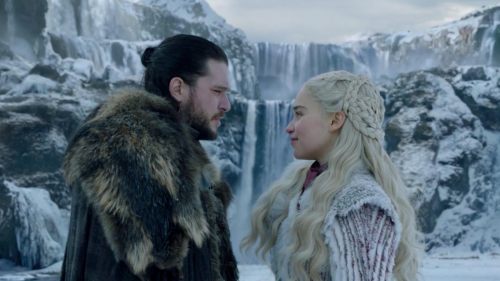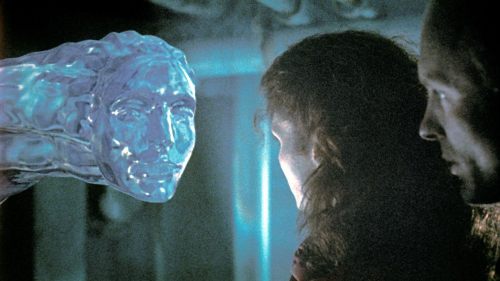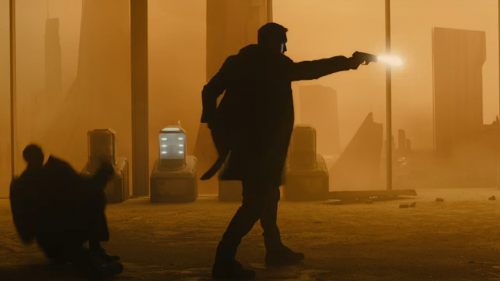4K Blu-ray Review: The Skin Jobs In BLADE RUNNER Get A Facelift
Me: You should check out Ridley Scott’s Blade Runner.
Friend: Ridley who?
Me: The guy who directed Alien.
Friend: Alien: Covenant?
Me: Um, yeah.
Later…
Me: What did you think?
Friend: The voice-over really helped explain what was going on.
Me: I’m sorry, you didn’t watch Blade Runner.
Friend: Uh, yes I did.
Me: No, you didn’t.
We all know someone who makes the mistake of taking the theatrical release as canon. If that were true, then Universal’s release of Terry Gilliam’s Brazil is the preferred cut. Whether or not Blade Runner had a tacked-on studio ending, where theatergoers leave with smiles wide instead of bewildered expressions, it still had the misfortune of arriving to movie screens a few weeks after a cross-dressing alien in granny attire with an affinity for Reese’s Pieces made the world weep with joy.
Ridley Scott’s 1982 film was a failure upon its release. Now it is one of the best-regarded science fiction films ever made. From a strict narrative perspective it is pretty basic. The year is 2019. The setting is Los Angeles. You won't find any palm trees; they've been uprooted by other vertical obstructions – full of glass and steel. Retired Blade Runner Rick Deckard (Harrison Ford) would like nothing better than to eat his noodles in peace until he gets one of those one-last-job-and-you're-done offers. With a spotless record of “retiring” synthetic humans known as “replicants,” Deckard is tasked with finding a fugitive group that has escaped an off-world colony and returned to the City of Angeles. Detect and destroy, in a nutshell.
Beyond its incorporation of film noir conventions (one of the reasons we have the subgenre of sci-fi noir – see also William Gibson's novel Neuromancer), weeding through the story, Blade Runner incorporates religious symbolism, effects of technology, and lingering paranoia – it was made in the '80s during the Cold War, after all – and shows us there's more going on here than just Deckard working a case.
I was a late bloomer to this sci-fi classic. For some reason it felt like getting a syllabus for English class at the start of the year with a list of classic novels that were required reading. I didn't want to watch it. Time passed. 1993 rolls around and a Director's Cut is released. Well would you look at that; Ridley Scott has gone and shaved a minute off the run time. But what a difference one minute can make. Gone was Deckard's voice-over and studio-imposed happy ending. In their place: a unicorn scene. It was damn near Legend-ary.
Watching it the first time, I admired the production design foremost but the narrative did nothing for me. Then I watched Blade Runner again and still admired the look, but was more empathetic towards the renegade replicants. Particularly, the leader, Roy Batty (Rutger Hauer), who, like Iggy Pop, had a lust for life. He was human-designed slave labor that wanted to live. He wanted to be free. My third time would be the charm, because by then my brain had absorbed so much from other films, text, and art that when finished my eyes bulged, my mouth opened and I delivered a Keanu Reeves-sized “Whoa!”
Blade Runner would get one last version in 1997 and, in essence, commemorate the film's 25th anniversary. This “Final Cut” includes all the additional violence and alternate edits found with the international cut inserted as well as the complete unicorn dream sequence and re-filming of Zhora's death with the use of a body double.
This is Ridley Scott's definitive version of what he considers his most personal work. Since the original Director's Cut was one of the first DVDs Warner Bros. released it only makes sense that the studio would usher The Final Cut to 4K UHD before the release of Blade Runner 2049 in theaters.
Thinking I was just getting Blade Runner: The Final Cut in 4K Ultra HD, behold my surprise that inside the plastic keepcase are also the first three discs that were originally part of the five-disc complete collector's edition Blu-ray of Blade Runner. Besides a standard Blu-ray of The Final Cut, you get a DVD containing the making-of documentary “Dangerous Days.” (Interesting fact: Dangerous Days was going to be the original title of the film). If you have three-and-a-half hours to kill and have just fallen in love with Ridley Scott's sci-fi masterpiece, this is worth your time. Though, Warner Bros' decision to not author this on Blu-ray is a damn shame. The documentary was photographed for high-definition. How did this get past quality control? The remaining Blu-ray has the U.S. Theatrical Cut (1982), International Theatrical Cut (1982), and Director's Cut (1992). What's not included is another disc of supplemental material (aka Disc 4's “Enhancement Archive”) and the “Workprint” (a fifth cut originally shown to test audiences in March 1982).
Blade Runner is not for everyone. You have to put in the work. It may take you a few viewings to fully embrace how great it is and why it has grown from cult to classic, much like John Carpenter's The Thing, another casualty from the Summer of '82 (Damn you, E.T.!). Until another restoration effort comes along – say in 15 years when Blade Runner turns the big 5-0 – this is the best The Final Cut will ever look on home video. The colors pop in HDR, and the sound is worth making like Marty McFly and cranking that shit all the way up. Watch the opening shot and you'll see (hear) what I mean.
Now that that's done, I have a few questions I'd like to ask you. Don't worry, I won't ask about your mother.



